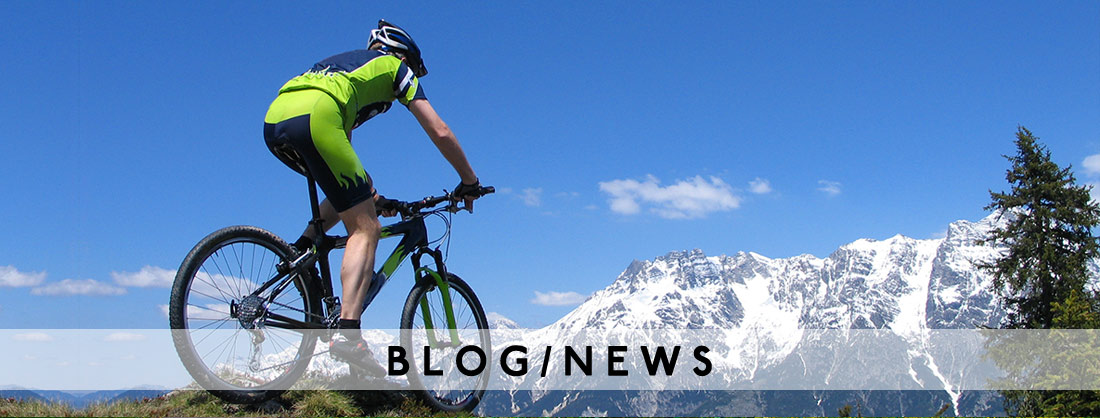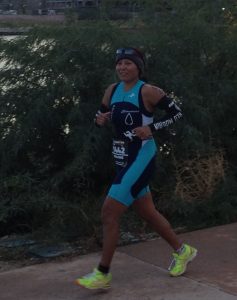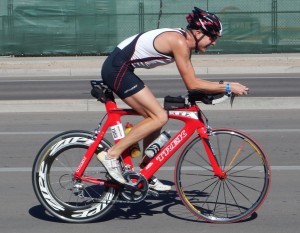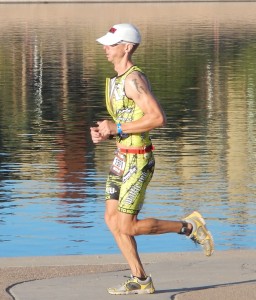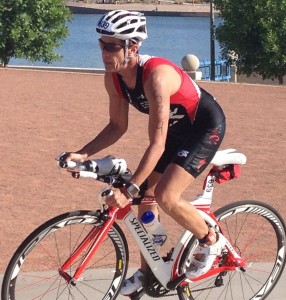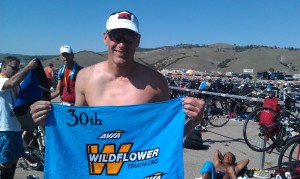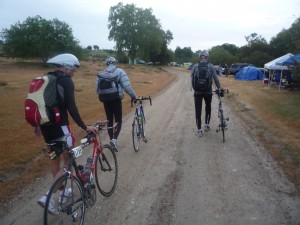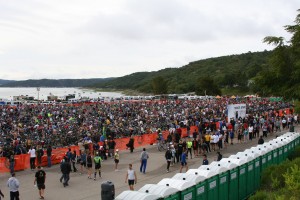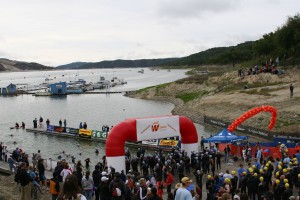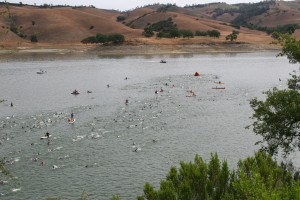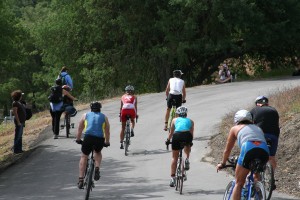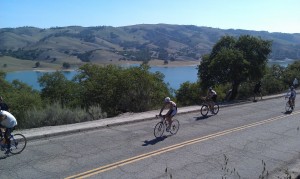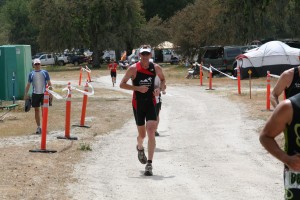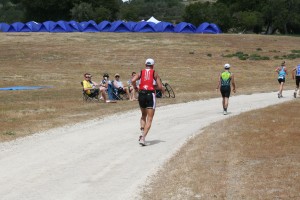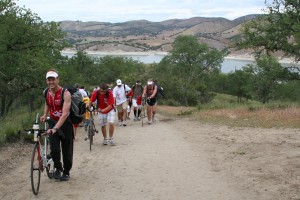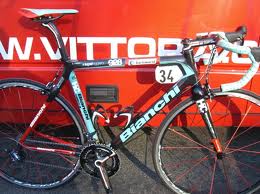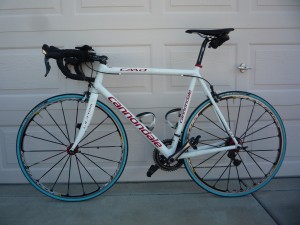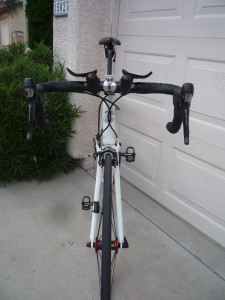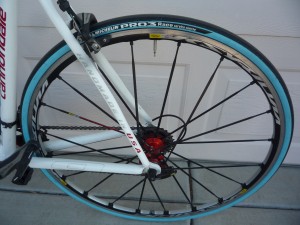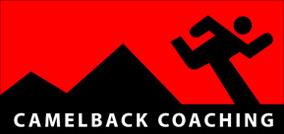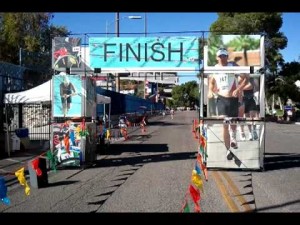 First, a few “technical” definitions:
First, a few “technical” definitions:
- The clunker race – a dramatic under-performance based on capabilities predicted from training
- The mean race – a performance at or near, just above or below, a level that training indicates
- The breakthrough race – a performance at a peak level, above and beyond what training indicates
The math doesn’t lie. Think about your races over the last few years. In fact, go grab your logbooks or open whatever you need to find your race results. Please, go do this now. I’ll wait. . . .
Ok, now that you’re back, let’s look at your data. You will see that a small percentage of your races were clunkers. A small percentage were breakthroughs. But the vast majority were means.
Admit that you’re seeing this. Internalize it.
Now my question is this: Why do we view breakthrough races as the expectation, the norm, yet dismiss the clunkers as exceptions or one-offs?
We all do it, right? We have that stellar race, that breakthrough performance, and yet, we expect the next one to be off the charts, too. And the one after that. And the one after that. Giant leap after giant leap. Phenomenal PR after phenomenal PR.
But is this realistic?
The answer, of course, is no.
Most of our races are mean races, or dare I say, average. Oh! That word! Average. We spit it out like cod liver oil.
“How was your race this weekend?”
“It was average. Thanks for asking.”
“Dude, I’m so sorry. That’s rough. Really.”
The average race, which I’ll heretofore refer as the mean race to protect the sensitive psyches reading this article, is a race where the athlete performs reasonably well based on the results they see in training.
Reasonably well often includes measurable improvements, but unless it’s a drastic improvement, we tend to be disappointed.
To be fair, we’re set up to view the mean race as a disappointment partly because we expect the rapid improvement we enjoyed early in our careers. When we first jump into the sport, every race is a breakthrough. We might have started in a relatively healthy, yet untrained state. Or perhaps we came from a single-sport specialty with little experience in the other two disciplines. With the addition of consistent training, we drop huge chunks of time race to race.
But as we become more fit and we tuck more race experiences under our belts, the improvements become more and more marginal. Ouch. This is another hard word to stomach. Worse than average, even.
A marginal improvement is still an improvement. You ran a 3:15 at the P. F. Chang’s Marathon last year. You ran a 3:14 this year. Outstanding. Congratulations. Based on your consistent, structured training, you enjoyed an improvement that fell right in line with where your metrics said you should have fallen.
“But Coach, my best time the year prior to the 3:15 was a 3:45. So logically, I should have run a 2:45 this year, right?”
“Uh, well, no. The 3:45 was your first attempt ever at the distance and that was completed with spotty training at best.”
The 2:45 would be a ridiculous expectation, right? Unless you possess world class DNA, it’s not going to happen. And yet, we still expect it.
In reality, a high-performing athlete who is well-trained, highly motivated and races in reasonable environmental conditions, is doing quite well to find most results falling in the mean category.
The truth is, we become numb to the fact that we’re super fit. We enjoy improvements of a minute here and a minute there and we’re dejected. I mean, we could do this with our eyes closed, right?
But you’re ignoring the years of training you’ve put in and how fit you actually are.
It’s not until we go through a period of being untrained due to injury, or have to deal with a stress-inducing personal situation, or just get old, fat and lazy that we realize at just how high a level we were performing in these “disappointing” mean races.
So going forward, how do we address the clunkers and the breakthroughs? First, let’s remind ourselves why these races happen.
- Clunkers are generally a result of severe environmental conditions, a lack of motivation, a poorly executed race or nutrition strategy, or some other external factor—personal stress, etc.
- Breakthrough races are typically a result of favorable environmental conditions, extreme motivation, and a lack of personal stress.
It is important to understand that the same training routine can result in both of these races. In other words, the training did not change to produce the results, only the factors on race day did.
The common reaction to a clunker is that I need to train harder or differently. The common reaction to a breakthrough race is that I should expect that performance every time. Both of these reactions are misguided.
As you evaluate your races, be realistic. Some races are going to be clunkers. Some are going to be breakthroughs and most are going to be means. Your training is the same for all three.
So instead of reacting to the race result and adjusting training, the successful athlete sticks with the routine and knows that the breakthrough race they so crave will eventually come, even if they are few and far between. The key is to recognize when a breakthrough race is in progress and take advantage of it and enjoy it.
Having a healthy mental outlook when considering your race results will grant you the freedom to take your clunkers and breakthroughs in stride, and ultimately, allow you to more fully appreciate and enjoy your mean races. The next time someone asks how your race went, smile when you tell them that you enjoyed an average race.
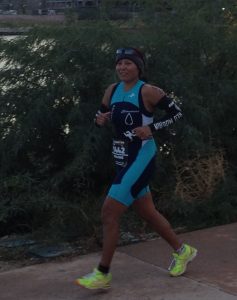 It’s that time of year again! On June 15th, we’ll be starting our monthly Ironman lecture series for the 13th consecutive year. These lectures will be held on the first or second Wednesday (usually) of each month and will discuss in detail subjects pertaining to Ironman/Long Course triathlon training and racing. Subjects will include training volumes, equipment selection, nutrition, race day strategy, sports psychology/goal setting, and contingency planning.
It’s that time of year again! On June 15th, we’ll be starting our monthly Ironman lecture series for the 13th consecutive year. These lectures will be held on the first or second Wednesday (usually) of each month and will discuss in detail subjects pertaining to Ironman/Long Course triathlon training and racing. Subjects will include training volumes, equipment selection, nutrition, race day strategy, sports psychology/goal setting, and contingency planning.
